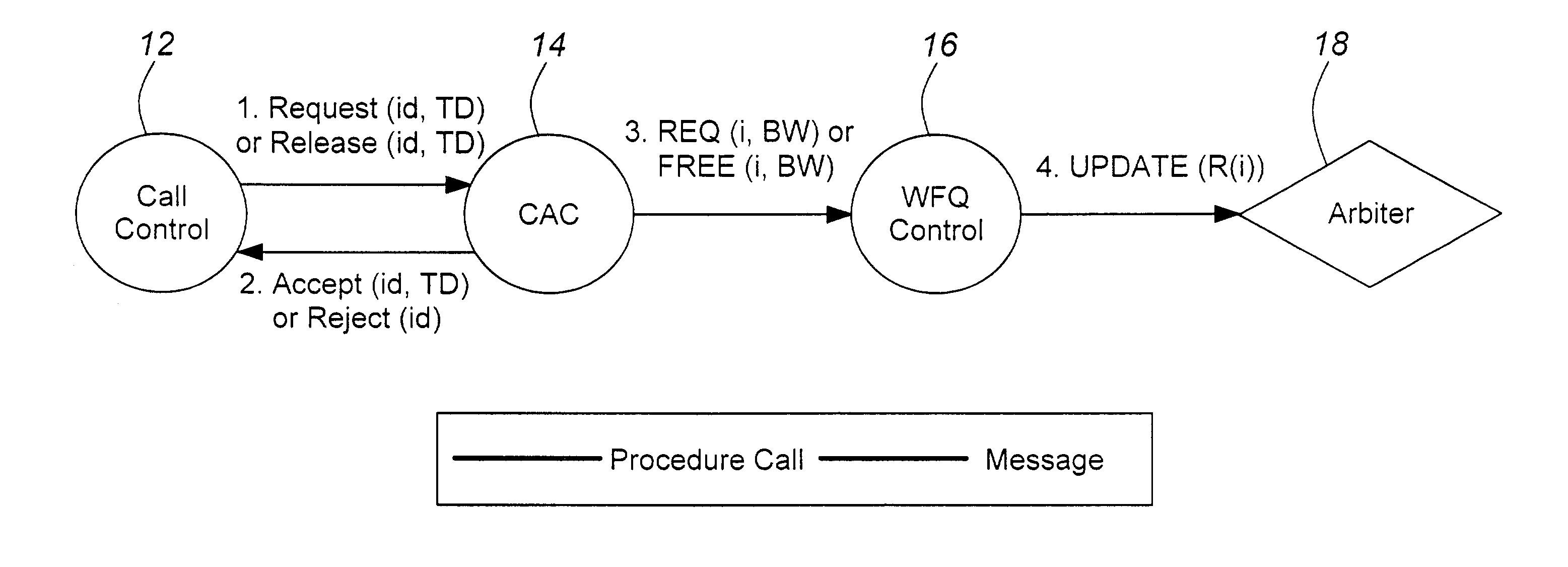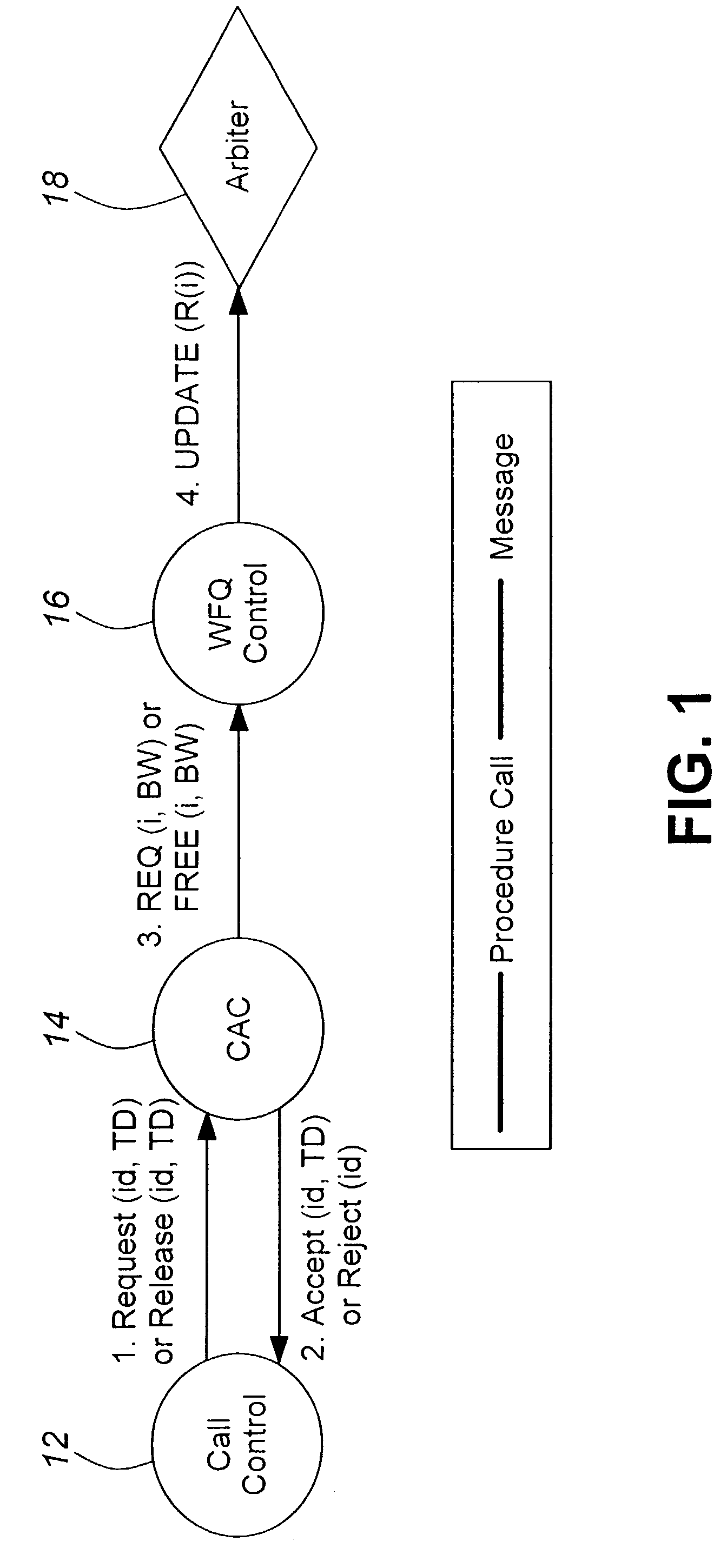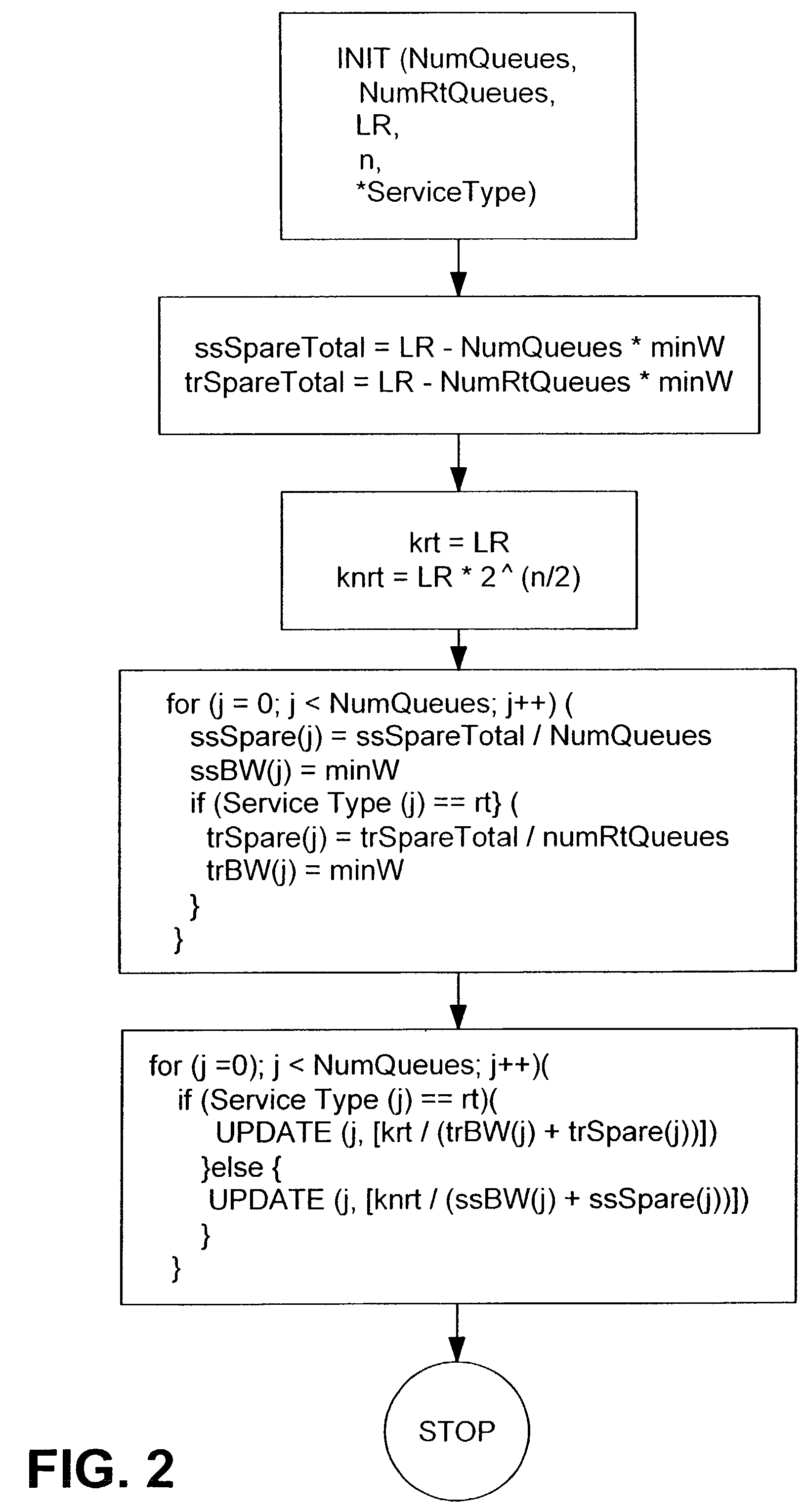Adaptive service weight assignments for ATM scheduling
a service weight assignment and atm technology, applied in the field of asynchronous transfer mode (atm) traffic management processes, can solve the problems of inability to adapt to and inability to meet the needs of atm traffic managers
- Summary
- Abstract
- Description
- Claims
- Application Information
AI Technical Summary
Problems solved by technology
Method used
Image
Examples
Embodiment Construction
[0017]The implementation of WFQ is divided into two functions: queue arbitration; and parameter (queue weight) configuration.
[0018]Queue arbitration is performed via a virtual time-stamped fair queuing (VSFQ) algorithm. The algorithm in the present application is for an architecture in which backpressure may be asserted on a per port basis.
[0019]Queue weight configuration is performed in software in response to connection setup and release events. The bandwidth demand of a queue is calculated explicitly by the Connection Admission Control and the information is passed to the WFQ Control. WFQ Control converts the bandwidth requirement into queue weights, and downloads new configuration values if necessary.
[0020]The VSFQ algorithm arbitrates between output queues by maintaining a virtual time-stamp for each queue. Each time that a queue is serviced, the time-stamp for that queue is incremented by a pre-configured queue weight. The output queue with the lowest time-stamp is the one whi...
PUM
 Login to View More
Login to View More Abstract
Description
Claims
Application Information
 Login to View More
Login to View More - R&D
- Intellectual Property
- Life Sciences
- Materials
- Tech Scout
- Unparalleled Data Quality
- Higher Quality Content
- 60% Fewer Hallucinations
Browse by: Latest US Patents, China's latest patents, Technical Efficacy Thesaurus, Application Domain, Technology Topic, Popular Technical Reports.
© 2025 PatSnap. All rights reserved.Legal|Privacy policy|Modern Slavery Act Transparency Statement|Sitemap|About US| Contact US: help@patsnap.com



